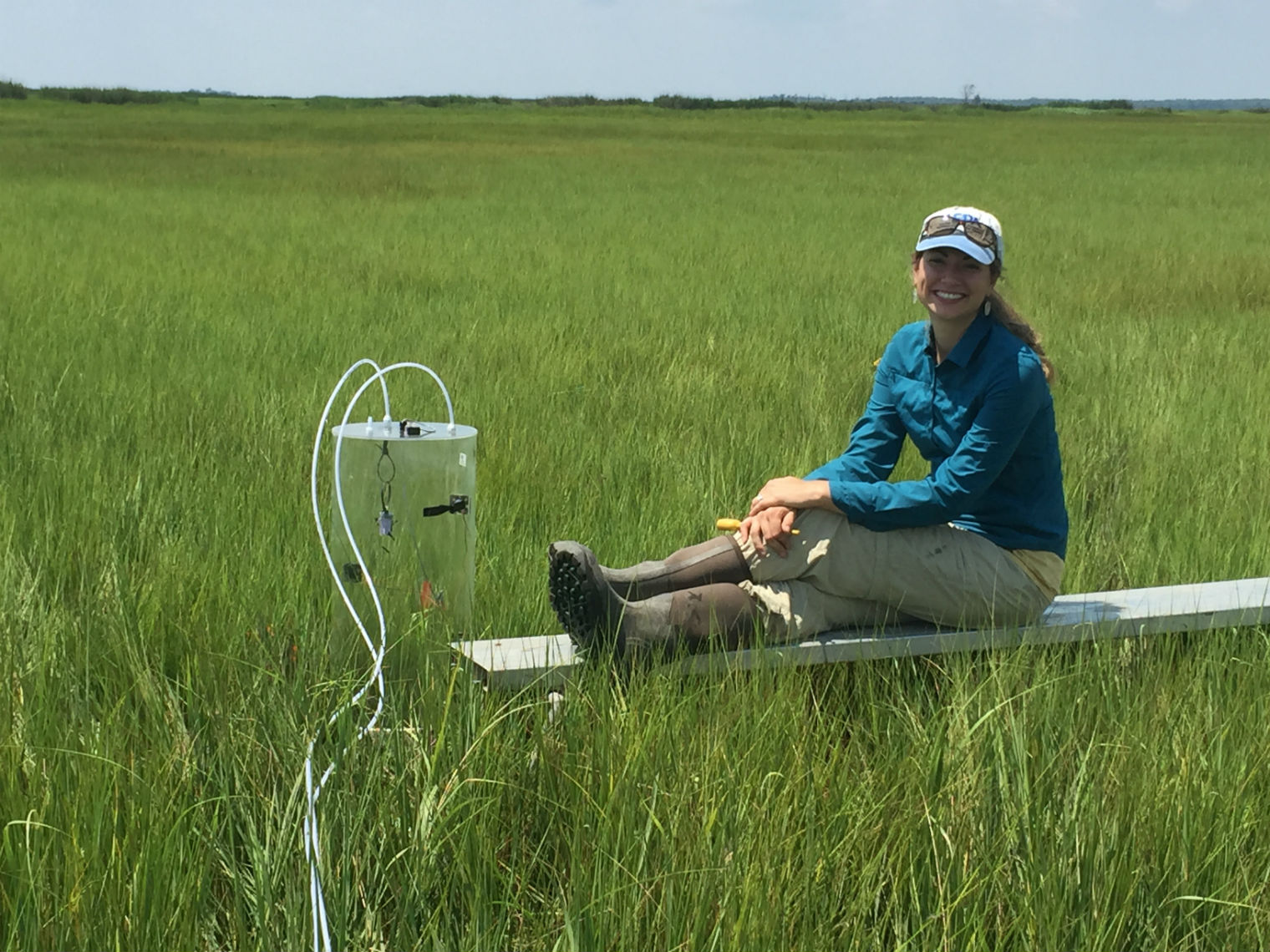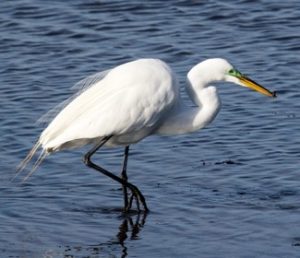By Elizabeth Watson and Rose Martin, Academy of Natural Sciences of Drexel University
“Blue carbon” is shorthand for the carbon found in three major coastal and marine ecosystems: mangroves, seagrasses, and salt marshes. Highly productive environments, these coastal ecosystems take up large amounts of carbon dioxide during the summer growing season and store it in the form of organic matter. On an acre-by-acre basis, they can store more carbon per year than a tropical rain forest!
By sucking carbon out of the atmosphere and storing it underground as organic matter, seagrasses and marshes help diminish the levels of carbon dioxide in the atmosphere. The conditions in these coastal ecosystems – both low oxygen levels and burial of material by mud and sand – prevent the carbon found in the organic matter from breaking down and being released to the atmosphere in the form of greenhouse gases, which trap heat and cause the climate to warm.
Preserving wetlands in their natural state is important, since disturbing them can release large amounts of heat-trapping carbon dioxide back into the atmosphere. Researchers with the Academy of Natural Sciences of Drexel University in Philadelphia are using the Barnegat Bay as a natural laboratory to study how salt marsh disturbances can alter carbon storage. Since the 1960s, nearly 8,000 ponds have been dug in coastal wetlands in the Barnegat Bay to help control mosquito populations. To study the impact of this activity on carbon storage, Academy scientists are collecting data on the carbon trapped in the marsh sediments and measuring gas exchange in both disturbed and undisturbed areas.

Although carbon dioxide is the greenhouse gas you likely hear the most about, there are actually three other common greenhouse gases: water, methane, and nitrous oxide.
Different human impacts can affect emissions of nitrous oxide and methane from marshes as well. For example, another factor that can reduce the value of carbon storage in coastal areas is a high level of nitrogen pollution. When nitrate levels are high in low oxygen environments, nitrous oxide can be emitted.
Nitrous oxide – the same gas you may receive at the dentist – has a global warming potential that is nearly 300 times that of carbon dioxide! This means that even seemingly small emissions can have a large impact on climate. Therefore, understanding ways to mitigate nitrogen pollution in salt marshes helps maximize marsh carbon storage benefits.
Because these ecosystems store so much carbon, the restoration of seagrass beds and coastal wetlands is one tactic for mitigating climate change. The information gathered by researchers will be used to design coastal restoration projects that yield maximum benefits for reducing future climate change. The availability of carbon financing for voluntary or mandatory emissions offsets means that money is available for projects that both fund coastal restoration and reduce future climate change – a win-win!


